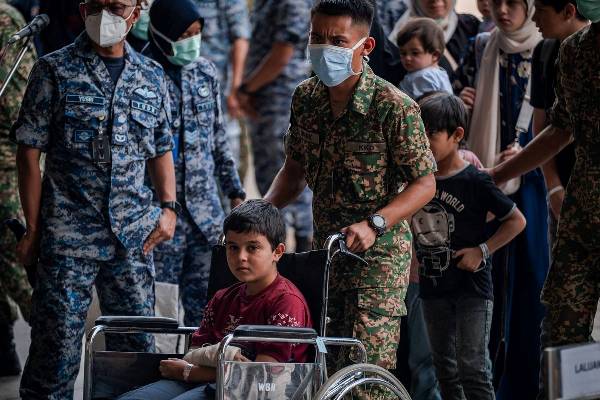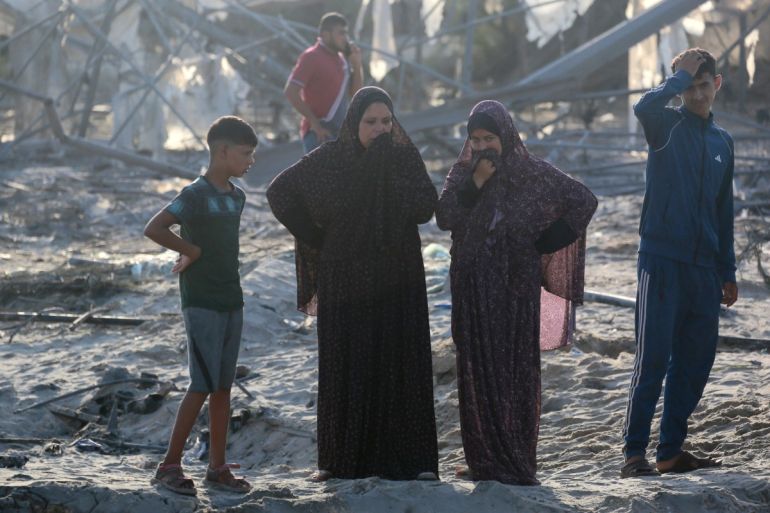The PA's chief negotiator suggested unprecedented compromises on the division of Jerusalem and its holy sites.
.jpg)
Erekat proposed a "creative" solution for the Haram al-Sharif in a private meeting with US envoy George Mitchell.
Saeb Erekat, the chief negotiator of the Palestinian Authority (PA), had suggested unprecedented compromises on the division of Jerusalem and its holy sites, the Palestine Papers obtained by Al Jazeera show.
Minutes of negotiations at the US State Department in Washington DC indicate that Erekat was willing to concede control over the Haram al-Sharif, or Temple Mount, to the oversight of an international committee.
The highly controversial issue of who controls the Haram al-Sharif (Noble Sanctuary), home of the Al Aqsa mosque – Islam’s third holiest site – has been a major sticking point during decades of negotiations between Israelis and the Palestinians.
Israel calls the Haram al-Sharif the “Temple Mount” because Jews believe it was the site of the Second Temple destroyed during Roman times. In recent years, Jewish settler groups – some with close ties to the Israeli government – have advocated building a “Third Temple", which would necessitate the destruction of the existing Muslim holy sites.
The site has often been a flashpoint in the Israeli-Palestinian conflict. On October 8, 1990, Israeli forces shot dead 21 Palestinian civilians at the Haram al-Sharif. The Palestinians, whom Israel said were throwing stones at Jewish worshippers at the Western Wall below the Haram, were protesting plans by a settler group called the Temple Mount Faithful to lay a cornerstone for the Third Temple.
Palestinians have accused Israel of trying to undermine the foundations of the al-Aqsa mosque through what Israel describes as archaeological excavations. In September 1996, Israel opened what it called a tourist tunnel along the foundations of the Haram, touching off violence that left dozens of people dead – the vast majority of them Palestinians.
In September 2000, Ariel Sharon, the then-Israeli opposition leader, visited the Haram al-Sharif accompanied by hundreds of armed Israeli police. Palestinian protests at what was seen as a provocation, and Israel’s armed response to them, marked the beginning of the second Palestinian Intifada.
"There are creative ways"
In a meeting on October 21, 2009 with George Mitchell, the US Middle East envoy, David Hale, Mitchell’s deputy, and Jonathan Schwartz, the then-US State Department legal adviser, Erekat told the Americans that they would need a “creative” solution for the division of the Old City.
Erekat: “It’s solved. You have the Clinton Parameters formula. For the Old City sovereignty for Palestine, except the Jewish quarter and part of the Armenian quarter … the Haram can be left to be discussed – there are creative ways, having a body or a committee, having undertakings for example not to dig [excavations under the Al Aqsa mosque]. The only thing I cannot do is convert to Zionism.”
Schwartz: To confirm to Sen. Mitchell, [this is] your private idea …
Erekat: This conversation is in my private capacity.
Schwartz: We’ve heard the idea from others. So you’re not the first to raise it.
Erekat: Others are not the chief negotiator of the PLO.
This was a surprising statement from Erekat: The status of the Haram al-Sharif has rarely been discussed during negotiations.
The 2000 Camp David talks marked the first time leaders from both sides bargained directly over the status of occupied East Jerusalem and its holy sites.
International law and the 1967 borders clearly show that the Haram al-Sharif is within the occupied Palestinian territories. Thus the discussion– between Israeli prime minister Ehud Barak and Palestinian president Yasser Arafat – proved highly controversial. Many participants in the talks say that their failure to resolve the status of the Old City's holy sites proved the ultimate deal-killer.
Arafat's stance
Bill Clinton, the then-US president advanced various proposals for dividing or sharing sovereignty, but Arafat proudly defended the unwillingness of the Palestinian Liberation Organisation (PLO) to compromise on the Haram al-Sharif’s sovereignty. It was a principled position that earned him scorn among Israelis and Americans, but universal support at home and throughout the broader Islamic world.
The status of the Haram al-Sharif was also seldom raised in more than 280 bilateral meetings during the Annapolis process (November 2007-December 2008). The main reason for this was domestic Israeli politics: Then-prime minister Ehud Olmert’s coalition partners demanded that the status of Jerusalem’s holy sites remained unresolved; the religious right-wing Shas party threatened to leave the government if the issue was even discussed.
Thus the Israeli delegation was not allowed to speak about it, as reiterated to the PA in a July 2, 2008 meeting by Udi Dekel, Olmert’s top negotiator:
“Why does your side keep mentioning Jerusalem in every meeting – isn’t there an understanding on this between the leaders?” Dekel asked Erekat.
The Israelis, in other words, freely admitted that they could not entertain any bargain on Jerusalem.
Yet the PA went ahead and presented its ideas – regardless of the tactical consequences.
During a May 29, 2008 post-Annapolis meeting in Jerusalem, Dekel told PA officials that the parameters of the peace talks had shifted.
“Since 2000, something happened in those 8 years so we are not at the same starting point. You started a terror war on us and we created facts on the ground. This is the reality that we live in today, so we can’t go back to Camp David. Circumstances changed considerably since then. Facts have changed. So we can’t freeze time and consider that we are in 2000 reality. The Middle East has changed,” Dekel told Samih al-Abid, a PLO map expert.
A month later, on June 30, 2008, in a meeting with Tzipi Livni, the then-foreign minister, Ahmed Qurei, the former PA prime minister, tried to persuade the Israelis to roll back their stance on the starting point of the negotiations.
Qurei: “Jerusalem is part of the territory occupied in 67. We can discuss and agree on many issues relating to Jerusalem: religious places, infrastructure, municipal function, economic issues, security, settlements. However, the municipal borders for us are 67. This is the basis, and this is where we can start.
[Silence]
Livni: Houston, we have a problem.
Qurei: Silence is agreement …
Erekat: It is no secret that on our map we proposed we are offering you the biggest Yerushalayim in history. But we must talk about the concept of Al-Quds [Jerusalem].
Livni: Do you have a concept?
Erekat: Yes. We have a detailed concept – but we will only discuss with a partner. And it’s doable.
Livni: No, I can’t.
By the end of the Annapolis negotiations, the PA appeared to believe that some internationalising of the Haram al-Sharif would be required. In an offer conveyed orally to [Palestinian President Mahmoud] Abbas on August 31, 2008, Olmert suggested that the US, along with Egypt, Jordan, and Saudi Arabia, should take membership on a committee to determine the fate of the Haram al-Sharif.
The committee would not have had the ability to force either Israel or the weaker Palestinian party to accept an agreement.
Erekat seemed willing to claim that such an arrangement would be acceptable, even though the US has no historic standing on the issue of holy sites and considers itself Israel’s closest ally. The other Arab participants would each have brought their own baggage, in particular the Saudis, who viewed resolution of the Arab-Israeli conflict as a core concern.
At the end of the Annapolis negotiations, on December 2, 2008 – just weeks before the Gaza war – Erekat said to David Welch, the US Assistant Secretary of State, that: “Saudi’s main concern is Jerusalem – not swaps and neighbourhoods”.
“To them Jerusalem is the Haram,” Erekat added.
Post Disclaimer | Support Us
Support Us
The sailanmuslim.com web site entirely supported by individual donors and well wishers. If you regularly visit this site and wish to show your appreciation, or if you wish to see further development of sailanmuslim.com, please donate us
IMPORTANT : All content hosted on sailanmuslim.com is solely for non-commercial purposes and with the permission of original copyright holders. Any other use of the hosted content, such as for financial gain, requires express approval from the copyright owners.
 Sri lanka Muslims Web Portal Sri Lanka Muslims News Center
Sri lanka Muslims Web Portal Sri Lanka Muslims News Center



